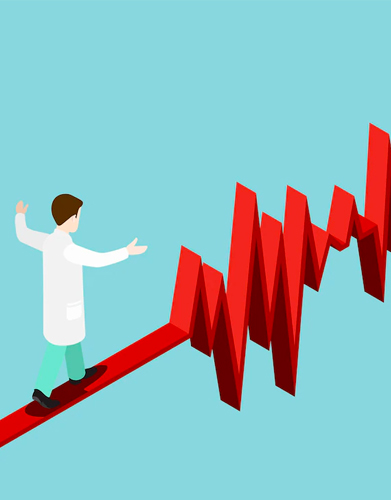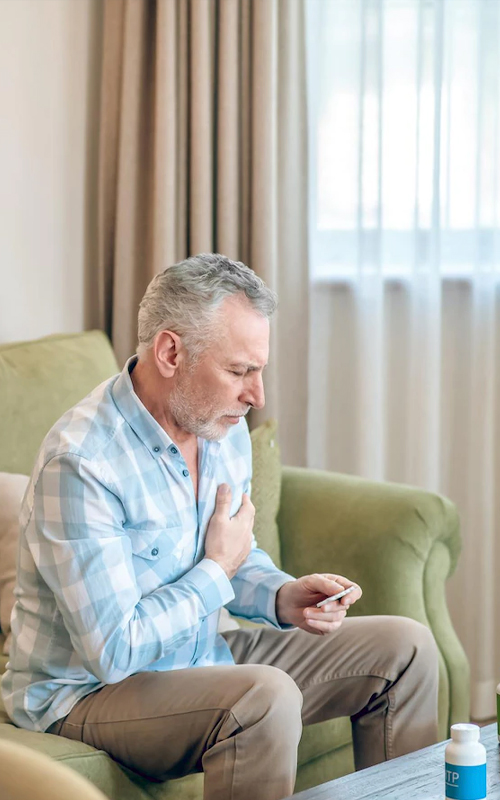Cardiophobia: A growing fear of heart attacks
Padraic Gibson, PhD and Founder of the OCD and Anxiety Disorders Clinic
Padraic Gibson is a psychologist, family therapist and supervisor. He works in Ireland, Italy, France and Malta. He is Senior Research Associate and Lecturer at LACT, Dublin City University and Clinical Director of The OCD and Anxiety Disorders Clinic / The OCD Clinic® .

Book an in-office consultation in Paris Montorgueuil or remotely by videoconference
We receive our patients from Monday to Friday.
To make an appointment you can call us on +33 (0) 1 48 07 40 40
or +33 (0) 6 03 24 81 65 or even make it directly online
by clicking here:
Cardiophobia, what is it?
Cardiophobia represents a particular form of fear and in particular the fear of dying (pathophobia). By pathophobia is meant the fear of the onset of a fatal disease. It differs from hypochondria, which I discussed in a previous article, where I have hypochondriac patients who panic at the slightest sign of fluctuation in their body, which is usually interpreted by the patient as a possible symptom of a potential disease. In the case of cardiophobia, the patient lives in constant fear of dying from a disease, specifically related to the cardiovascular system. This fear is irrational and persists despite numerous negative medical consultations. Even though medical tests are performed and have actively ruled out organic pathological conditions, we still find this problem lingering in the mind of the patient. In the case of cardiophobia, (thanks to our treatment model and meticulous research-action-clinical-intervention), we can identify the main attempts at dysfunctional solutions adopted by patients suffering from this obsessive problem.

Am I cardiophobic?
The main dysfunctional behaviors adopted by patients suffering from cardiophobia are:
Specialized medical consultations.
In an attempt to get their fear of dying under control, patients tend to seek numerous specialist examinations and consultations, usually with a respected specialist if possible. Visits to hospitals and specialist clinics are regular, ECGs, blood pressure measurements and time spent on the internet researching DR Google are an integral part of the daily lives of those affected. This continual search for reassurance has little or no effect on reducing the patient's anxiety.
Continuous heart rate monitoring.
The attempt to control their heartbeat leads to an experience of losing control. This solution of obsessively focusing their conscious attention on monitoring their heart to control its rhythm leads them to worry about both it beating too fast (tachycardia) and feeling it beat too slow ( bradycardia). They also look for any suspicious or concerning chest pain. As is the case with most forms of rigid and obsessive control (which eventually lead to a loss of control), even here the paradox of cardiophobia is created: as the patient tries to reassure himself by watching his heart, the more he alters the functioning and the natural rhythm of it, thus producing the effect he feared to discover (namely an irregular heartbeat), and he then triggers a panic attack.
Avoidance of certain situations.
In the post about the mental traps of phobics recently, I talked about the dangers of avoidance. A cardiophobic person usually avoids all settings or situations that could cause stress on the heart, such as funerals, running, football games, parties, etc., gradually reducing any physical activity that could expose their heart to zero. at a risk. The irony is that this leads to a decrease in physical health and an increase in time spent obsessing over their heart and how it works.
Permanent conversations.
As is often the case in phobic and obsessive disorders, the patient continually shares his fears with others, which has the paradoxical effect of increasing his fear and obsessive fixation on his heart. Even if the patient receives rational reassurances from those around him, this only fuels his need for reassurance and his belief that something sinister is at hand.

Treatment of cardiophobia with brief systemic therapy
Systemicist Padraic Gibson sheds light on the treatment of cardiophobia with brief systemic therapy. Padraic Gibson is a family therapist and supervisor. He works in Ireland, Italy and Malta. He is a Senior Research Associate and Lecturer at Dublin City University and Clinical Director of The OCD Clinic®.
Clinicians must be able to gain the patient's trust and must communicate effectively so that the patient feels that you are taking them seriously and gaining their trust. The treatment must also be able to use methods that are not simple, rational explanations, which will only fuel the problem. We have found that effective therapy is to break the cycle between obsession and habitual dysfunctional solutions, in order to quickly resolve their phobia.
LACT trainings to treat phobias with the systemic approach
The treatment of phobias by the systemic approach is taught in the third year of the LACT course of the Clinician of the Relationship and in the clinical master of Giorgio Nardone .
Content covered in the training on the treatment of phobias
- Monophobias, specific phobias and generalized phobias
- Diagnostic criteria for monophobias or specific phobias (DSM-5).
- List of the most common forms of monophobia.
- Dysfunctional solution attempts related monophobias, specific phobias and generalized phobia.
- The treatment of monophobias or specific phobias in brief strategic therapy (strategy, communication and therapeutic relationship).
- Explanation of the therapeutic maneuver "study your enemy".
- Explanation of the therapeutic maneuver "logbook".

Related Resources and Articles
GENERAL - Stress, anxiety and anxiety disorders - By Claude de SCORRAILLE
CASE STUDY - Stress, anxiety and anxiety disorders - Valéria, a very weak warrior - By Olivier BROSSEAU
Anxiety disorders: In the beginning, how to identify anxiety disorders?
Anxiety disorders: Can we see both avoidance and control strategies in a patient?
Anxiety disorders: Is paranoia part of the category of psychosis?
Anxiety disorders: Does the anxiety disorder make it easier to stay in the exhaustion of the stress mechanism?
Anxiety disorders: Faced with pathological doubt, how can you help a person?
Anxiety disorders: the interval of therapeutic sessions from the first session
Eco-anxiety: From learning impermanence to action
Confinement, déconfinement and paradoxes.
Included video. Claude de Scorraille COVID 19 - from fear to emotional distress, reduce the risk of post-traumatic stress disorder - Claude de Scorraille
Overcome fear and anxiety through hypnosis and self-hypnosis. Michele Ritterman.